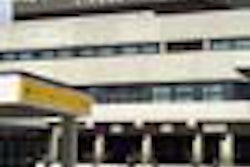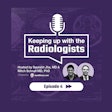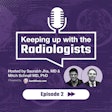Emerging medical imaging technologies are opening doors to careers where none existed 20 years ago. "If I could have dreamed up this career in the fourth or the fifth grade, this is what I would have wanted to do, but it did not exist then," said Jean Lea Spitz, M.P.H, RDMS, FAIUM,FSDMS, who is chairman of the radiologic technology department at the University of Oklahoma Health Sciences Center.
The educational program Spitz oversees has two years of clinical and classroom education, which follows the completion of two years of general college education by students. "It is quite a wonderful field. There is so much variety," Spitz said.
Radiologic technologists are the medical personnel who perform diagnostic imaging examinations and administer radiation therapy treatments. They are educated in anatomy, patient positioning, examination techniques, equipment protocols, radiation safety, radiation protection, and basic patient care.
Stephanie Eatmon, Ed.D, R.T. (R)(T), who is the educational program director of the radiation therapy program at California State University, Long Beach, said, "I love my job. Radiation therapy isn’t for everyone, but for someone who is good with detail and is interested in technology, it is rewarding. I always wanted to be a doctor as I was growing up, but radiation therapy is more for me. And I love teaching students about it."
A well-planned education is vital to success. There are many available curriculums, including four-year baccalaureate programs, two-year associate degree programs, and two-year certificate programs.
According to the Joint Review Committee on Education in Radiologic Technology, the United States has 582 accredited radiography programs and 69 programs accredited in radiation therapy. For more information about schools, contact the JRCERT at 20 N. Wacker Drive, Suite 900, Chicago, IL 60606.
Career opportunities are excellent in all areas of radiologic technology. Technologists may specialize in a specific imaging technique, such as bone densitometry, cardiovascular interventional technology, computed tomography, mammography, magnetic resonance imaging, nuclear medicine, quality management, sonography, general radiography, radiation therapy, or medical dosimetry.
Like many other health professions, a personnel shortage exists in every specialty and in every region of the country. A recent survey showed 42% of the hospitals surveyed do not have enough sonographers, 40% do not have enough radiographers, and 26% do not have enough nuclear medicine technologists. Eatmon and Spitz said all of their students have jobs before they graduate. Demand for the services of radiologic technologists is expected to continue as the population ages, requiring more medical care as more technologists retire.
In four years, average wages increased 21% with an hourly rate of about $22 an hour. Urban areas report even higher salaries. The ASRT, the largest radiologic science professional organization with more than 90,000 members, is committed to quality of life issues in the workplace to ensure that radiologic technology is rewarding in all of its aspects.
By American Society of Radiologic TechnologistsJune 2001



















